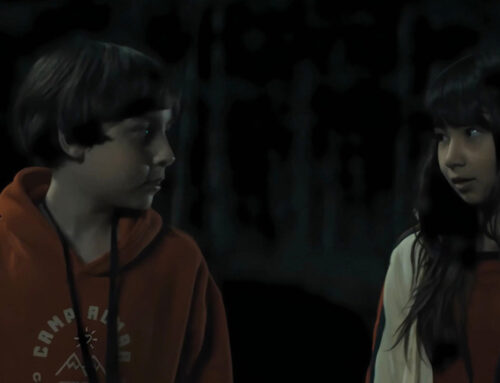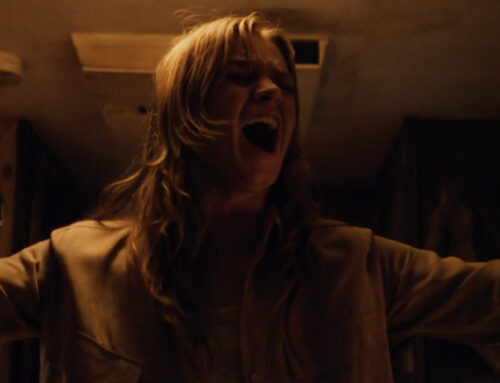 Otavio and Gilda are a very wealthy couple of the Brazilian elite who have the habit of eating their employees. Otavio owns a private security company and is a notable member of The Cannibal Club. When Gilda accidentally discovers a secret from Borges, a powerful congressman and the Club’s leader, her and her husband’s lives are in danger.
Otavio and Gilda are a very wealthy couple of the Brazilian elite who have the habit of eating their employees. Otavio owns a private security company and is a notable member of The Cannibal Club. When Gilda accidentally discovers a secret from Borges, a powerful congressman and the Club’s leader, her and her husband’s lives are in danger.
Luxury, indulgence, and hedonism all seem to complement each other as exquisitely as fava beans, a bottle of Chianti, and the liver of a Census taker, and The Cannibal Club (O clube dos cannibais) serves as further evidence to support this claim.
Written and directed by Guto Parente, this slickly produced Brazilian horror film that depicts the cannibalistic exploits of an ultra-wealthy and ultra-depraved couple in what can best be described as a slickly produced, gratuitously violent, and sharply satirical indictment of Brazil’s ultra-wealthy that is both biting and entertaining in equal measure.
The Cannibal Club introduces us to Otavio (Tavinho Teixeira), the owner of a successful private security company and a long-standing member of the titular cannibal club, and his equally carnivorous wife Gilda (Ana Luiza Rios). They are a socially elite couple who enjoy seducing members of their staff, violently killing them mid-coitus, and then dining on their flesh.
The central characters at the core of this story have virtually zero redeeming qualities. Otavio and Gilda are caricatures of the ultra-rich: they’re classist, morally repugnant sociopaths who are jaded to the luxuries their afforded and have no concept of consequences. But Teixeira and Rios’s portrayals of their affluenza-afflicted characters make them more captivating than they have any right to be. They are satisfyingly hateable, and when Gilda makes a scandalous discovery that jeopardizes their lives, we get to watch them squirm and scheme and devise outlandish plans in order to save their own skins.
Within the first ten minutes, the audience watches a graphic sex scene between Gilda and a member of her staff that ends as Otavio kills the fornicating male with an axe and ejaculates into a puddle of his blood. This quickly establishes one of the film’s most notable qualities: its lack of subtlety. The sex, the violence, and even the messages at the heart of this story are garishly depicted with about as much subtlety as a punch in the face. But while some films are hindered by a lack of subtlety, this one revels in it. The Cannibal Club is a film where the rich characters are literally eating the poor, and the film makes no qualms about how hedonistic and despicable its characters are. It’s intentionally in-your-face, and its choice to be so is refreshingly admirable.
The decadence and gratuitous nature of the story is further heightened by the film’s crisp cinematography and assured direction. The lavish and opulent sets are rendered with vibrant colors and exquisitely composed framing, and Parente imbues even the film’s most gratuitous moments with an air of elegance. Its visual style looks and feels polished, glossy, and lavish, and this perfectly complements the high-class, grandiose attitudes of its central characters.
The Cannibal Club is the rare kind of film that couples crassness with classiness to superb effect. Parente’s bluntly delivered socially message harmonizes well with its garish depictions of opulence and depravity, and results in a biting satire that is just as politically motivated as it is entertaining.
| Cannibal Club | ||
| RATING: | NR | Cannibal Club - Green Band Trailer . |
| Runtime: | 81 Mins. | |
| Directed By: | ||
| Written By: |
|
|







